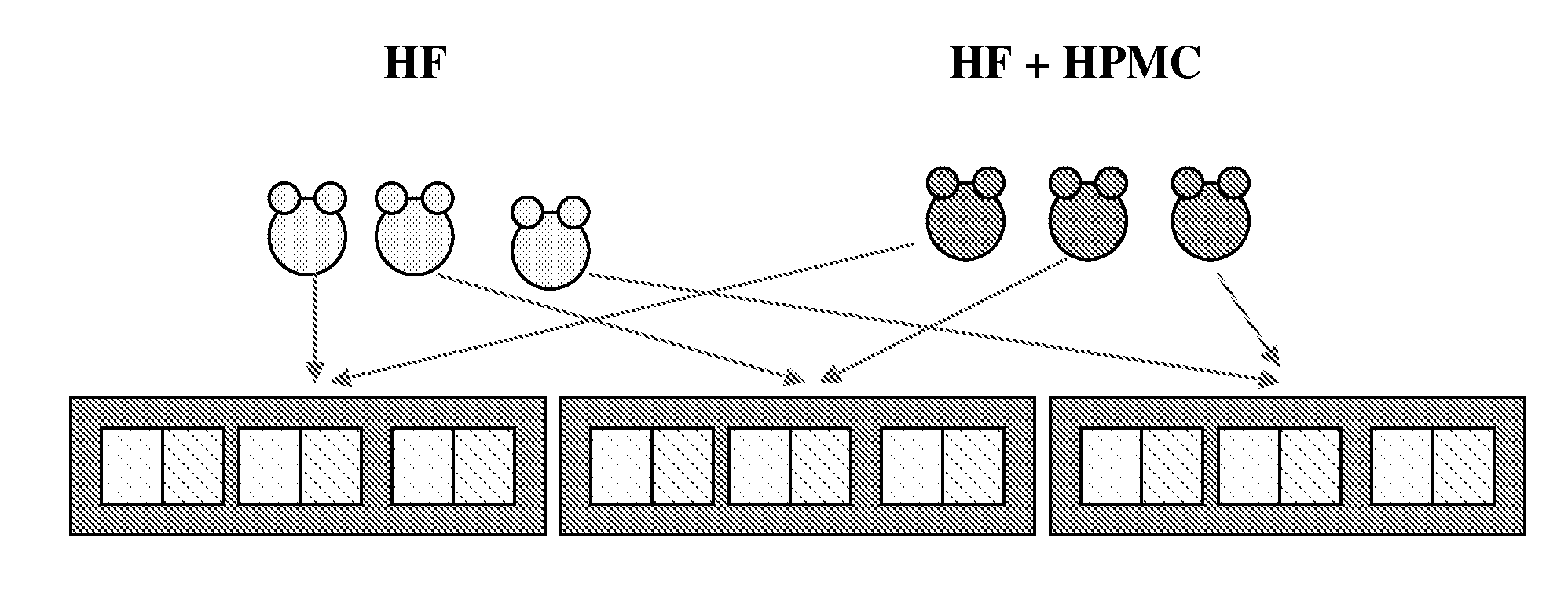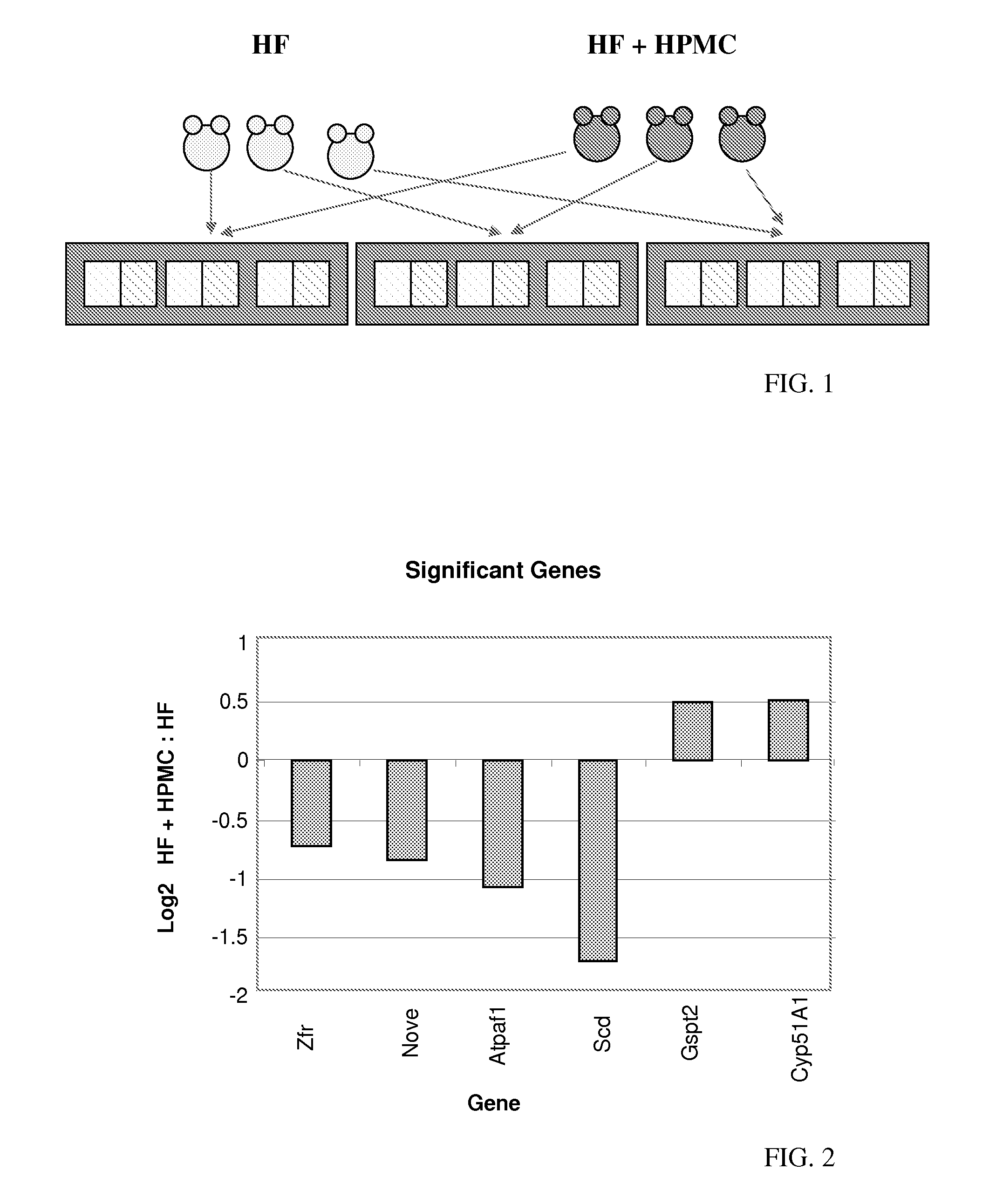Preventing or reducing oxidative stress or oxidative cell injury
a technology of oxidative stress and cell injury, applied in the direction of biocide, anti-noxious agents, drug compositions, etc., can solve the problems of generating potentially deleterious reactive oxygen metabolites, changing membrane permeability, and ultimately cell death, and reducing the expression of stearoyl-coa desaturase-1 (scd1) gene expression and reducing the mitochondrial activity of atp synthas
- Summary
- Abstract
- Description
- Claims
- Application Information
AI Technical Summary
Benefits of technology
Problems solved by technology
Method used
Image
Examples
examples
[0055]The effect of administering a hydroxypropyl methylcellulose (HPMC) to hamsters was tested. The HPMC had a methoxyl content of 19-24 percent, a hydroxypropoxyl content of 7-12 percent and a viscosity of about 100,000 mPa·s, measured as a 2 wt. % aqueous solution at 20° C. and is commercially available from The Dow Chemical Company under the Trademark METHOCEL K100M hypromellose.
[0056]An animal study was done with 9 male golden Syrian hamsters with a starting body weight of 70-90 grams (Sasco strain, Charles River, Wilmington, Mass.) in each of the three diets specified below. The animal study was approved by the Animal Care and Use Committee, Western Regional Research Center, USDA, Albany, Calif.
[0057]The hamsters were placed on either a low fat (LF), high fat (HF), or high fat diet containing hydroxypropyl methylcellulose (HF+HPMC) for four weeks.
[0058]The LF diet contained 8 percent microcrystalline cellulose, 4 percent butter, 2 percent corn, 20 percent protein, 61 percent s...
PUM
 Login to View More
Login to View More Abstract
Description
Claims
Application Information
 Login to View More
Login to View More - R&D
- Intellectual Property
- Life Sciences
- Materials
- Tech Scout
- Unparalleled Data Quality
- Higher Quality Content
- 60% Fewer Hallucinations
Browse by: Latest US Patents, China's latest patents, Technical Efficacy Thesaurus, Application Domain, Technology Topic, Popular Technical Reports.
© 2025 PatSnap. All rights reserved.Legal|Privacy policy|Modern Slavery Act Transparency Statement|Sitemap|About US| Contact US: help@patsnap.com


